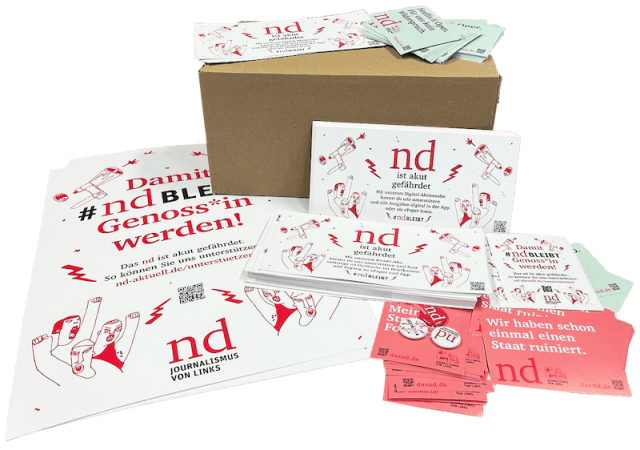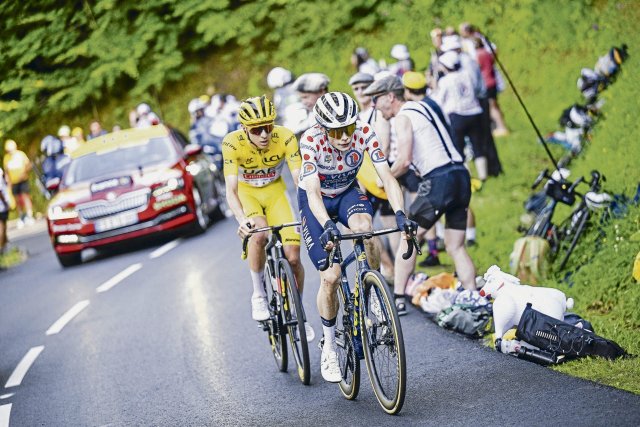On Sunday, Jonas Vingegaard (from) and Tadej Pogačar drove up to the Plateau de Beille faster than anyone before them.
Photo: imago/Belgian
The mountain records are just falling in this Tour de France. Tadej Pogačar has already shattered the records of his previous generations on three major climbs. At Galibier he was faster than Nairo Quintana in 2019, at Pla d’Adet he surpassed the record set in 1993 by Poland’s Zenon Jaskula – who later admitted that he had been doped with caffeine and cortisone that season. On Sunday, Pogačar was a whopping three minutes and 44 seconds faster on the Plateau de Beille than Marco Pantani when he won the Tour in 1998. Pantani’s doping with Epo is well known. The Slovenian also set a new record on the steep ramp of San Luca together with his rival Jonas Vingegaard.
Professional anti-doping hunters are concerned about this development. Mario Thevis, director of the Cologne doping control laboratory, still urges caution. He doesn’t want to see doping as the sole cause of the record flood. “Of course you have to take other factors into account for better performance,” he says in a telephone conversation with “nd,” pointing to the development of the material, advances in training methodology and nutrition. But he also points out: “If you exclude these factors, then you also have to realize that the possibilities of influencing performance through unauthorized means and methods have become more extensive.”
Difficult to detect doping substances
According to Thevis, there are more and more substances on the doping market that are difficult to detect. An example of this is AICAR, a substance produced by the body that ensures greater energy supply in the body. This increases endurance performance. In everyday clinical practice, the substance is prescribed to leukemia and diabetes patients, among others. »The challenge is that AICAR occurs as an endogenous substance. Distinguishing between this naturally produced AICAR and the synthetically produced and administered AICAR in doping samples is challenging. It takes an indication, such as an increased AICAR concentration in the urine or abnormal marker values, in order to determine the actual origin of the present AICAR using an isotope ratio mass spectrometry analysis,” explains Thevis.
This means: In order for a positive test to be successful, two procedures must be used. First the concentration of AICAR is measured. Only if this exceeds a limit value is the second, more complex test procedure carried out. The order for this is given by sports associations and anti-doping agencies. But this has only happened about ten times so far, says the doping expert.
Another difficulty is that exogenous AICAR disappears from the organism quite quickly. “That doesn’t allow for a very large detection window,” he says. Here, too, the doping controller warns against short-circuits: “The option that it is not used illegally or is used very rarely can explain the low number of abnormal samples with regard to AICAR.” The substance first appeared in cycling in 2009. At that time, empty AICAR packaging was found in the team hotel in Astana. The Kazakh racing team won the Tour de France that year.
Carbon monoxide instead of altitude training?
A report from the Escape Collective about the use of carbon monoxide tests to determine hemoglobin levels recently caused a stir. Three teams – those of Pogačar and Vingegaard as well as Israel Premier Tech – admitted the stake. The test is controversial. On the one hand because of its danger – after all, you breathe in the poison carbon monoxide. On the other hand, because inhaling it can put the body into shock, which accelerates the production of red blood cells. These increase the ability to transport oxygen. Inhaling carbon monoxide can therefore be a substitute for altitude training. When Pogačar was asked about it on Tuesday, he reacted angrily: “I don’t know anything about it. I thought it was something coming out of the cars.” He’s right about the latter. Whether professional cyclists are currently sniffing exhaust gases to thicken their blood – this question now accompanies the tour.
For the sake of fairness, it must also be mentioned that some all-time records will also survive this tour of France. Panatani, for example, climbed l’Alpe-d’Huez in 1995 in just 36 minutes and 50 seconds. Pogačar and Vingegaard are only in 18th place here with more than 39 minutes, achieved on the 2022 Tour. The Alpe will be skipped this year. Instead, on Friday we go to the Col de la Bonette, which is more than 2000 meters high. Here, the now 47-year-old French former professional Peter Pouly holds the record with one hour, five minutes and one second. Let’s see if Pogačar can even do it under an hour.
#ndstays – Get active and order a promotional package

Regardless of whether it is pubs, cafés, festivals or other meeting places – we want to become more visible and reach everyone who values independent journalism with an attitude. We have put together a campaign package with stickers, flyers, posters and buttons that you can use to get active and support your newspaper.
To the promotional package
sbobet sbobet judi bola judi bola online
